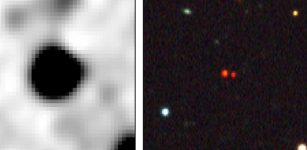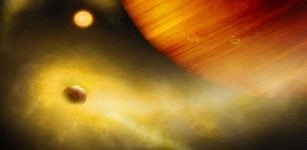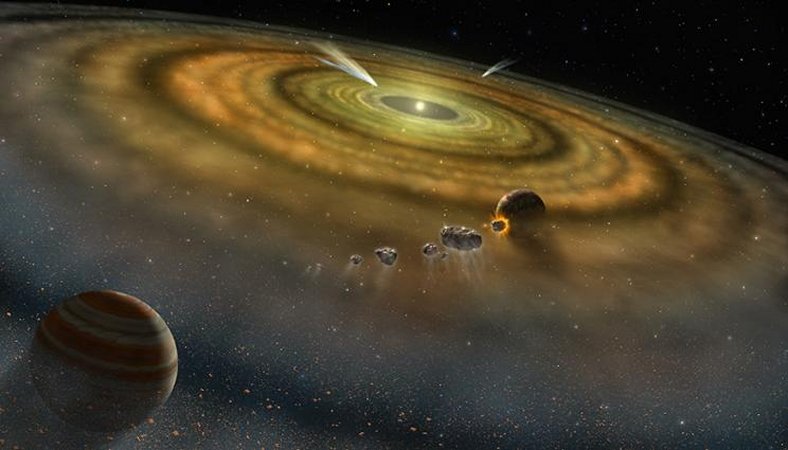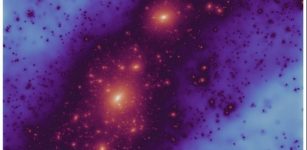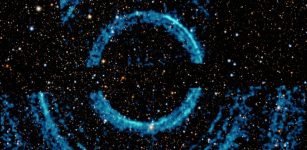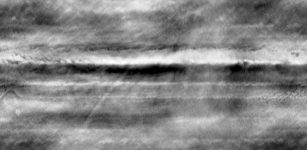It Rains Iron On This Ultra-Hot Giant Exoplanet
Eddie Gonzales Jr. – MessageToEagle.com – Astronomers have discovered an ultra-hot giant exoplanet where it rains iron.
The extreme planet has a day side where temperatures climb above 2400 degrees Celsius, high enough to vaporize metals. Strong winds carry iron vapor to the cooler night side where it condenses into iron droplets.
“One could say that this planet gets rainy in the evening, except it rains iron,” says David Ehrenreich, a professor at the University of Geneva in Switzerland.
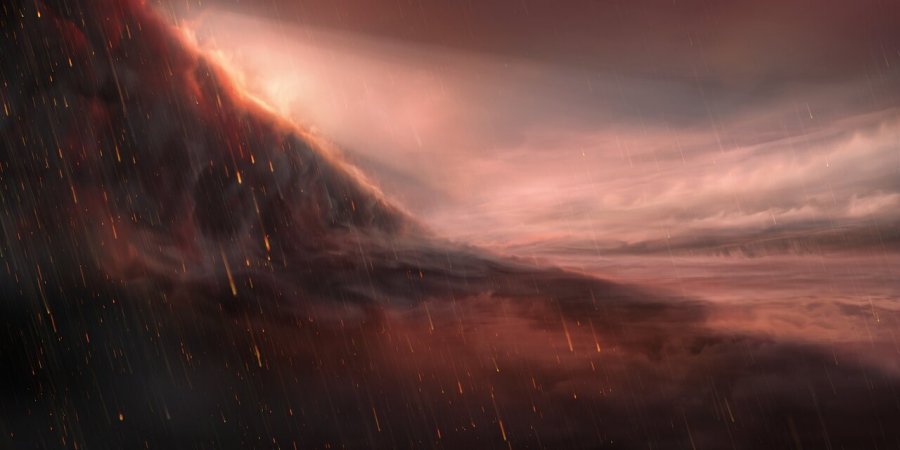
This illustration shows a night-side view of the exoplanet WASP-76b. The ultra-hot giant exoplanet has a day side where temperatures climb above 2400 degrees Celsius, high enough to vaporize metals. Strong winds carry iron vapor to the cooler night side where it condenses into iron droplets. To the left of the image, we see the evening border of the exoplanet, where it transitions from day to night. Credit: ESO/M. Kornmesser
Known as WASP-76b, it is located some 640 light-years away in the constellation of Pisces.
This strange phenomenon happens because the ‘iron rain’ planet only ever shows one face, its day side, to its parent star, its cooler night side remaining in perpetual darkness. Like the Moon on its orbit around the Earth, WASP-76b is ‘tidally locked’: it takes as long to rotate around its axis as it does to go around the star.
See also:
Extremely Hot Giant Exoplanet KELT-9b Has Boiling Atmosphere
Is Exo-Io Hidden Behind WASP-49b System An Extreme Version Of Jupiter’s Moon Io?
Rare-Earth Metals In Atmosphere Of Hot Exoplanet KELT-9 b – Discovered
On its day side, it receives thousands of times more radiation from its parent star than the Earth does from the Sun. It’s so hot that molecules separate into atoms, and metals like iron evaporate into the atmosphere. The extreme temperature difference between the day and night sides results in vigorous winds that bring the iron vapor from the ultra-hot day side to the cooler night side, where temperatures decrease to around 1500 degrees Celsius.
Not only does WASP-76b have different day-night temperatures, it also has distinct day-night chemistry, according to the new study. Using the new ESPRESSO instrument on ESO’s VLT in the Chilean Atacama Desert, the astronomers identified for the first time chemical variations on an ultra-hot gas giant planet.
They detected a strong signature of iron vapor at the evening border that separates the planet’s day side from its night side. “Surprisingly, however, we do not see the iron vapor in the morning,” says Ehrenreich. The reason, he says, is that “it is raining iron on the night side of this extreme exoplanet.”
“A fraction of this iron is injected into the night side owing to the planet’s rotation and atmospheric winds. There, the iron encounters much cooler environments, condenses and rains down.”
Written by Eddie Gonzales Jr. – MessageToEagle.com Staff

